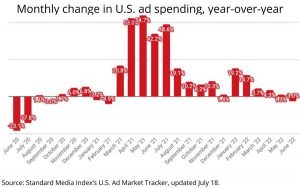Of all the new skills marketers have been asked to master in the digital age, one of the most intimidating is SEO. Organizations know what it is and they know they should be doing it, but the ever-changing algorithms and techniques often strike them as foreign and incomprehensible.
As a result, many skip it altogether – a 2014 Adobe survey showed 49 percent of marketers use intuition rather than data to spend their marketing budget. That’s a shame, because there’s no doubt that SEO can be effective. According to a study from the National Retail Federation, search marketing, including SEO, was 2014’s biggest source of new customers for 85 percent of online retailers.
The flip side of that, of course, is that because SEO is so valuable, the people who do it well tend to be expensive or even lack transparency. It’s not a skill that can be mastered with one YouTube tutorial; expert SEO demands smart strategies around keywords, meta tags, indexing issues and penalty recovery.
But there’s good news too. Even if you don’t have that knowledge, you can still help your search rankings take a quantum leap by understanding the basics in three areas: SEO strategy, content strategy and Google trends.
SEO Strategy
The first element to tackle is identifying the right keywords to use in your content. With basic analytics, you can discover how people are finding you or if at all. What search terms are driving the most inbound leads? What is the intent behind the search? For instance, a person searching for a local business or a product within a certain price point will signal their priorities. Long-tail keywords – which are longer, more specific phrases – tend to be used by consumers closer to making a purchase.
One simple way to boost your SEO game is through links to your offline business involvements. Maybe you’re attending or speaking at a conference, sponsoring a local sports team, or running a fundraiser. Cultivating links to those activities is an automatic boost for your search rank.
Finally, check out how your competition is doing. Search on the keywords that you think your personas should be using, and see who’s at the top of the page. Then see how they’re doing it and what you can learn from it.
Content Strategy
As the strongest influencer of search visibility, content marketing is your best shot at getting “discovered” online. The first rule of digital visibility: frequent and original content. By distributing high-quality content such as blog posts and site assets, you can elevate your appeal to search engines. Google and other search tools are continually updating their algorithms to penalize sites that are stuffed with keywords or unoriginal content. The era of “black hat” techniques has departed as SEO firms reboot themselves as “content marketing” agencies.
Put yourself in the shoes as a buyer of your own services. What questions come to mind first? What information about is most valuable? What types of content perform best? If you notice that one of your personas isn’t getting caught in your SEO net, design some content that will lure them in and make sure it is useful and practical instead of being stuffed with sales or marketing speak.
But just creating optimized content isn’t enough. The Internet is all about who you know, which means the right partnerships can be your greatest asset. Reach out to bloggers and influencers, and cultivate those valuable brand advocates who love to talk about you online. As your content is shared and your name is mentioned, your search rankings can rise.
Google Trends
As we mentioned above, Google has changed up its search algorithms over the years, making them difficult to pin down precisely. But some trends are broad enough that businesses can follow basic guidelines in creating SEO-friendly assets. This one reason to focus your digital strategy on your site design, specifically optimizing your site for mobile.
Google has penalized sites that generate errors for mobile users, with mobile configuration errors leading to a 68 percent loss in smartphone traffic. Clear navigation is also a must; sites with an efficient structure win over websites with complicated navigation. Google does factor bounce rate and visitor time spent on your site into your rankings, so be sure your site is inviting and useful.
If you’re wondering about social, Google has denied using social signals in its algorithm and says the strong correlation between social signals and rankings is just that, not causation. But having a vibrant social presence certainly can’t hurt – especially since it encourages the sharing of your content.
(258)




